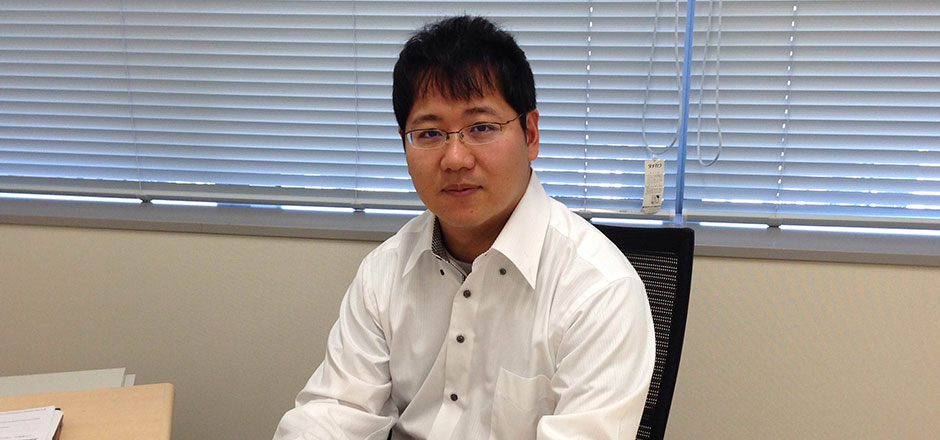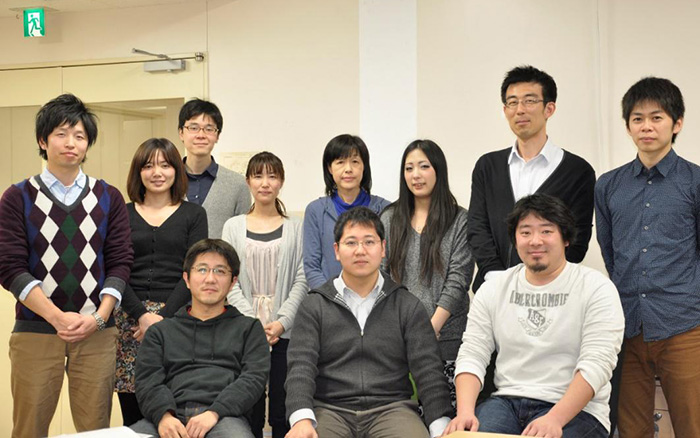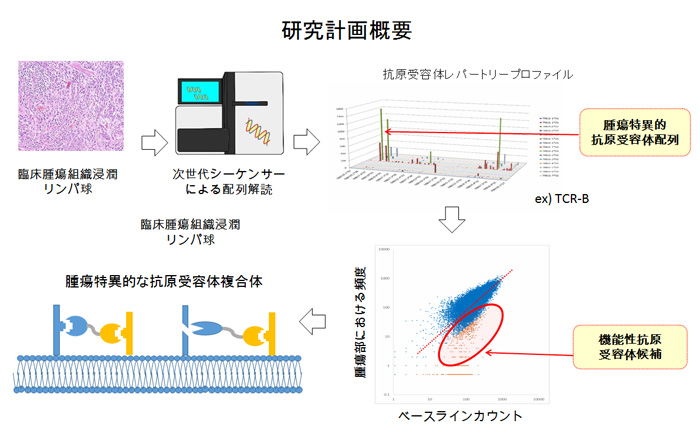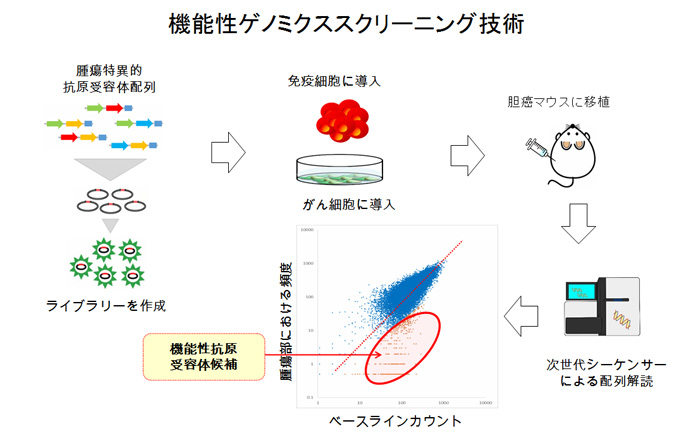<Figure1>Group photo of the laboratory
Principal Researcher, Ishikawa is at the front center.
HOME > Research and Development Projects Adopted in FY2014 > Technology development for obtaining functional and cancer-specific single-domain antigen receptor complex.
Project Leader:Ishikawa Shumpei
Department of Pathology, Graduate School of Medicine, The University of Tokyo(2018/11-)

Cancer immune therapies such as cancer vaccinations, immune cell transplantations and immune check point inhibitors have gained significant attentions from cancer researchers and clinical doctors recently, and it has been strongly hypothesized that the tumor immunity really works against cancers in our body. However, in many cases, such cancer immunities in vivo are not so efficient enough to achieve complete remissions of our tumors. Furthermore, our understanding of molecular mechanisms of cancer immunity are also not enough to develop effective therapeutic strategies against cancers. Lymphocytes in our body acquire various antigen-receptor repertoire by the genetic recombination of immune-receptor gene loci in each cells, and it is hypothesized that the tumor-infiltrating lymphocytes show their specific repertoire against tumor antigens. We have so far been developing a novel method for sequencing genetic structures of variable regions of antigen-receptor repertoire among tumor infiltrating lymphocytes. In this project, by combining sequencing technologies and functional genomics screenings, we are planning to identify antigen-receptor structures which specifically harbor effective anti-tumor functions. Moreover, by combining such effective antigen-receptor domains, we are planning to develop artificially modified antigen-receptor complexes with synergistic functions and effects against cancers. Although plenty of cancer driver gene mutations have been identified by recent genome sequencing, the number of druggable targets depending on such cancer driver genes has not increased, and, currently, most of the drug developing pipelines are designed for overlapped molecules. On the other hand, cancer antigens (including glycosylated antigens) have not been clarified fully and identifications of cancer antigens have still been challenging fields of research. Incorporating the state-of-the-art genome sequencing technology at several steps in this study, we also aim to identify novel cancer antigens in addition to functional antigen receptor complexes. It is also necessary for us to establish in vivo evaluate platforms for our research products in this study, and we will develop some mouse models which physiologically mimic human tumor environments in mice. The functional complexes of cancer-specific antigen receptor domains can be administered alone or used in combination with immune-cell therapies with protein recombination technologies. We will start to analyze a couple of major malignancies in Japan such as Gastric, Lung and Liver cancers and aim to develop novel bio-medical pharmaceuticals against cancers depending on our new molecular insights into the cancer immunity system.

Principal Researcher, Ishikawa is at the front center.

(Upper) By the genome sequencing of tumor infiltrating lymphocytes, we tried to select the tumor-specific antigen-receptor sequences. (Lower) Using the antigen-receptor repertoire as a screening library, the functional genomics screening will be done to identify the antigen-receptor with anti-tumor activity. Furthermore, combining the antigen receptors, we try to develop the anti-tumor functional complex.

The outline of functional genome screening to identify antigen-receptors with anti-tumor function is shown. (Upper) Based on the sequenced tumor-specific antigen receptors, screening library is constructed and introduced into the tumor and immune cells. (Lower) These cells are xeno-transplanted into mice, and the changes of cell populations will be analyzed by next-generation sequencing. The antigen-receptors with significant read-count changes will be the candidates with anti-tumor function.